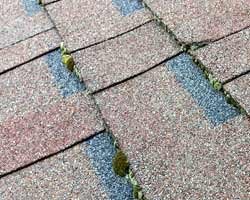The timeless elegance and toughness of e finishes make them a popular choice for everything from kitchen counters to stunning architectural exteriors. However, maintaining the natural beauty of stone surfaces requires special care and attention. We dive into the essential techniques and best practices for preserving the luster of stone in our guide. Say goodbye to stains, grime, and wear and say hello to the enduring allure of pristine stone.
Pros and Cons of Natural Stone Facades
Natural stone has been used for building for a long time in architecture. It has been used to make big buildings like castles and cathedrals, and it has also been used to make cute cottages in the British countryside. Weathering and environmental pollutants leave an indelible mark on these surfaces after the passage of time. Frequently, the accumulation of dust and exhaust fumes can alter the stones appearance, resulting in shades of gray or black. Moreover, the presence of moss, algae, and lichens on the stone can result in the formation of patches or a patina over time.

When considering the restoration of a natural stone facade, it’s crucial to explore professional masonry services. Distinguishing between acid-vulnerable stone varieties, like dolomite, jura, marble, travertine, and other calcareous natural stones, and acid-tolerant choices such as granite and slate is of utmost importance. The selection of cleaning techniques is also influenced by the nature of dirt and the extent of soiling, thereby adding complexity to the decision-making process.
You may also like: Preparing your roof before winter
There are different types of contamination found on stone cubes
Cobblestones, like any other utilitarian surface, get dirt and stains over time. This is especially noticeable in the fall and winter seasons when elements like water, snow, fallen leaves, and branches leave stubborn marks. Furthermore, moss growth, while less problematic, is a common occurrence, especially in areas with excessive moisture.
The situation becomes considerably more intricate when it comes to heavily trafficked areas such as sidewalks, parking lots, and maneuvering yards. The owners of such places often encounter persistent, oily stains, including the well-known engine or diesel oil spots, which can be particularly frustrating. Is there a cost-effective and efficient way to clean cobblestones that are heavily soiled? It turns out there is, offering a DIY approach that’s both pocket-friendly and highly efficient.
Preparing the Surface for Cleaning: A Vital Step in the Process

Regardless of the nature of impurities adhering to the surface of the cube, it is imperative to conduct a thorough preparation prior to commencing the cleaning process. Use a traditional broom or a more efficient sweeper to sweep the entire surface. This initial step not only provides a clearer assessment of the situation, but also enables a more efficient sweeper. The removal of the leaves and sand that have settled on the cube is crucial, ensuring a more thorough groundwork for subsequent cleaning operations. Its best to avoid doing these tasks when there are strong winds because this can bring back unwanted debris, which can make cleaning harder.
Eliminating oil and fat stains
Undoubtedly, stains originating from various types of oils and fats, including stubborn engine stains, present one of the most formidable challenges. With time, these stains will meld with the cobblestone structure, rendering their removal nearly insurmountable. The key to success is a quick response – the sooner we tackle and remove the oil stain, the better it will be. Is there a way to proceed? In the case of a fresh stain, you should start by covering it with sand to absorb a portion of the liquid. Next, rinse the stain with warm water and a household detergent, such as dishwashing liquid, to remove the stain.
Be aware that specialized chemicals might leave visible discoloration. Before using something, test it in a hidden place to make sure it’s safe and won’t cause any more problems. The process of impregnating the cobblestones is safe and will not result in any further complications.
Banishing Moss and Lichen
The presence of this pest is yet another unwelcome visitor to the proprietors of cobblestones. Swift grows best in damp and shaded areas, often in the gaps between the cobblestones. Swifting is equally imperative when dealing with moss, as it has a propensity to spread rapidly, covering a larger surface.

Can we remove moss from cobblestones? The primary method involves mechanical collection, utilizing narrow rakes. Larger moss growths can be manually uprooted; however, they are likely to resurface over time. A gas burner can be used to incinerate the organic clumps, which then dehydrate and can be swept away. Rest assured, the cobblestone surface will remain unscathed. The use of chemicals can also be effective in removing moss and lichen from sidewalks, though in the case of larger areas, the expense and potential harm to not only the sidewalks but also to us and the nearby garden plants must be taken into account.
Plain water and vinegar are the third, more natural solutions. The mixture is prepared in a 2:1 ratio (two parts water to one part vinegar), which is then sprayed onto the overgrown areas. The spraying procedure should be repeated to combat the issue.
You should read: Are gutter guards worth it?
Combatting Cement, Glue, and Paint Stains
When dirt gets on cobblestones, it can be hard to clean. This is especially true when cement has hardened and can stand up to chemicals, detergents, and low-pressure water. Thus, immediate intervention is essential. The sooner the stain is addressed, the greater the likelihood of its successful removal.
If you find dirt from construction too late, it might be a good idea to use special grinding wheels on an angle grinder or seek professional masonry services. Mechanical removal is the only effective way to get rid of this type of dirt. It is possible to prevent such contaminants by simply laying a thin paint foil in areas prone to such contaminants. The cost of such protection is relatively low, with medium-grade painters foil being a cheap option. It can be used for various construction tasks, which makes it more practical.
Mechanical Methods
Another effective approach for eliminating stubborn stains and revitalizing the appearance of cobblestones involves the use of specialized equipment. Use low-pressure grit blasting for heavily encrusted natural stones

If stubborn dirt or crust formations need to be removed from surfaces in a gentle way, low-pressure grit blasting is an effective method. This method is also good for getting rid of graffiti. A construction compressor is used to fill a blasting gun with compressed air for low-pressure abrasive blasting. The air in the mixing chamber is treated with a fine, abrasive compound, and in some instances, water is added to dampen dust. To remove dirt from soft stones, a particularly fine-grained abrasive should be applied at a gentle pressure.
Use industrial vacuums to make sure that as few particles as possible stay in the cracks or on the surface of a wall after cleaning. These vacuums can also get rid of a lot of blasting media residue and dirt from the floor.
When to call a professional?
The accumulation of years worth of grime and pollution can have a detrimental effect on the visual appeal of your deck or driveway. Environmental elements and various pollutants further contribute to degradation, significantly affecting the endurance of your place exterior.
The complete approach involves the use of material-specific chemical cleaning methods, sprucing up the inherent beauty of your brick, stone, stucco, or concrete with care. Masonry services offer waterproofing methods for specific materials to make sure they stay dry for a long time.
In addition to having a solid understanding of the properties of each type of stone, masonry services also need the skills necessary to work with each type. For example, consider travertine. It has holes that are normal. These craters are often filled and polished to give the stone a uniform appearance. The fillers eventually loosen or fall out with traffic and use. In order to resolve the issue, stone restoration contractors mix tints with fillers that blend with the appearance of the surrounding stone and use a professional stone cleaning process called ‘floating’ to apply the filling material evenly.
The process is then followed by honing and polishing with diamond-impregnated pads in a series of progressively finer grits in order to achieve the desired travertine finish. You need to practice and learn a lot to correctly diagnose stone problems and fix them.
Mistakes to avoid – Selecting Inappropriate Cleaning Equipment
Using abrasive sponges, brushes, and scouring pads may scratch or hurt more delicate stones, like marble and soapstone, Use of abrasive cleaning tools can make stone surfaces like granite more susceptible to staining. When cleaning natural stone surfaces, it is recommended to use mild cleaning agents and sponges. Our experts recommend using a soft microfiber cloth, which effectively traps dirt and other particles.


